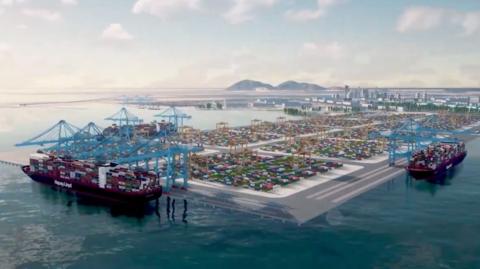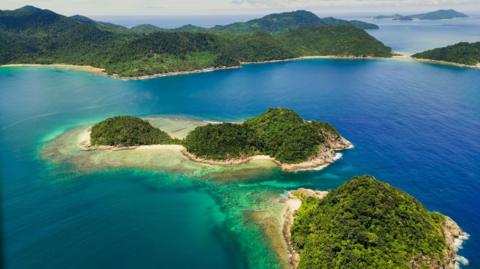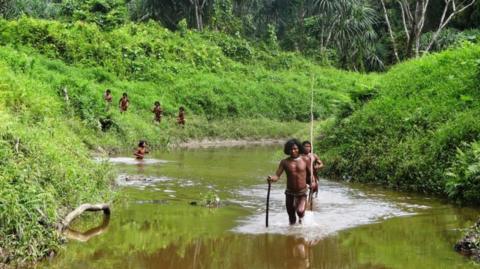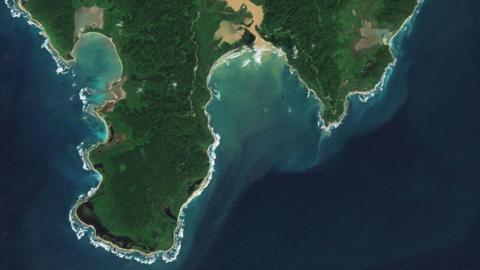“The forest is our supermarket,” says Anice Justin. “We get almost everything from the forests on these islands. It is what we survive on.”
Mr Justin, an anthropologist, has grown up in the Andaman and Nicobar islands straddling India’s east coast. A federally-administered territory, the ecologically-fragile region consists 836 islands, of which only 38 are inhabited. The Nicobar Islands are a distinct group of islands in the southern part of the territory, located some 150 km (93 miles) south of the Andaman Island.
Now Mr Justin watches with trepidation as India plans a multi-billion ‘Hong Kong-like’ development project on the Great Nicobar Island, one of the largest and most secluded parts of the Nicobar archipelago.
Built on a budget of 720bn rupees ($9bn or £6bn) and spread over 166 sq km, the project includes a transshipment harbour, a power plant, an airport and a new township, all designed to link the area to crucial global trade routes along the Indian Ocean and the Suez Canal.
Positioned near the Strait of Malacca, one of the busiest shipping lanes in the world, the project promises to boost international trade and tourism - the government reckons that some 650,000 people will be living on the island by the time the project is completed in 30 years.
Experts say the multi-billion plan is also a part of India's larger goal to counter China's growing influence in the region.
But the scheme has sparked alarm among the islanders who fear the loss of their land, culture, and way of life, with the project threatening to push them to the brink of extinction.



